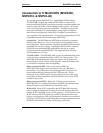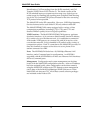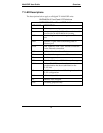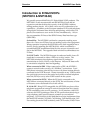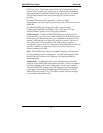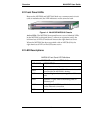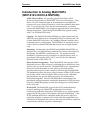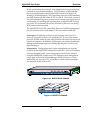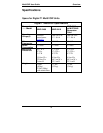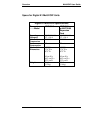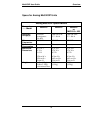
Overview MultiVOIP User Guide
18
Introduction to Analog MultiVOIPs
(MVP-210/410/810 & MVP428)
VOIP: The Free Ride. We proudly present Multi-Tech's MVP-
210/410/810 generation of MultiVOIP Voice-over-IP Gateways. They
allow voice/fax communication to be transmitted at no additional
expense over your existing IP network, which has ordinarily been data-
only. To access this free voice and fax communication, you simply
connect the MultiVOIP to your telephone equipment and your existing
Internet connection. These analog MultiVOIPs inter-operate readily
with T1 or E1 MultiVOIPs units.
Capacity. The MultiVOIP model MVP810 is a eight-channel unit, the
MVP410 a four-channel unit, and the MVP210 a two-channel unit. All
of these MultiVOIP units have a 10/100Mbps Ethernet interface and a
command port for configuration. The MVP428 is an expansion circuit
card for the four-channel MVP410 that turns it into an eight-channel
voip.
Mounting. Mechanically, the MVP410 and MVP810 MultiVOIPs are
designed for a one-high industry-standard EIA 19-inch rack enclosure.
By contrast, the MVP210 is a table-top unit. The product must be
installed by qualified service personnel in a restricted-access area, in
accordance with Articles 110-16, 10-17, and 110-18 of the National
Electrical Code, ANSI/NFPA 70.
Phone System Transparency. These MultiVOIPs inter-operate with a
telephone switch or PBX, acting as a switching device that directs voice
and fax calls over an IP network. The MultiVOIPs have “phonebooks,”
directories which determine to who calls may be made and the
sequences that must be used to complete calls through the MultiVOIP.
The phonebooks allow the phone user to interact with the VOIP system
just as they would with an ordinary PBX or telco switch. When the
phonebooks are set, special dialing sequences are minimized or
eliminated altogether. Once the call destination is determined, the
phonebook settings determine whether the destination VOIP unit must
strip off or add dialing digits to make the call appear at its destination
to be a local call.
H.323 & SIP. The MultiVOIP supports the H.323 standards-based
protocol enabling your MultiVOIP to participate in real-time
conferencing with other third-party VOIP Gateways or endpoints that
support the H.323 protocol (for example, Microsoft NetMeeting
®
). The
H.323 standard defines how endpoints make and receive calls, how
endpoints negotiate a common set of audio and data capabilities, how
information is formatted and sent over the network, and how endpoints
communicate with their respective Gatekeepers.



